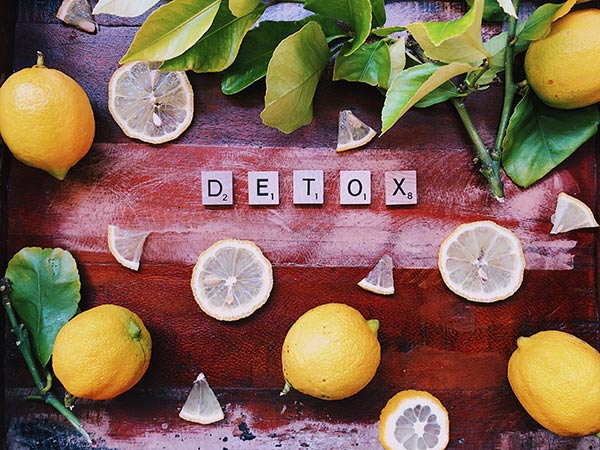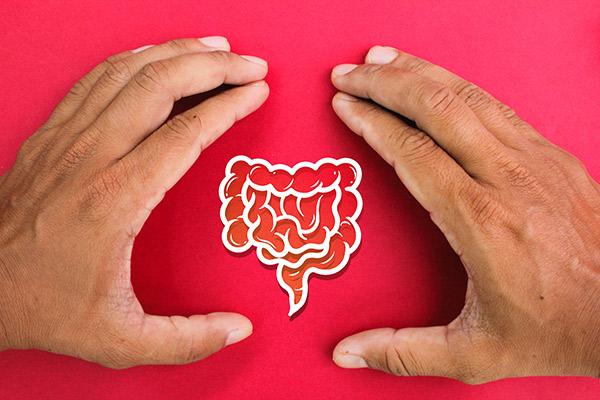
In working with patients with mycotoxin illness, there are certain bases that need to be covered, certain pillars if you will, of treatment, that ensure the best results.
These pillars can be addressed gradually over time – many of my mycotoxin illness folks are highly sensitive, and so we need to adopt a step-by-step approach or they will get a lot sicker. In others, we need to address Mast Cell Activation Syndrome (MCAS) to reduce their reactivity to foods and supplements in order for us to be able to proceed with mold toxin treatment.
Here are the six key pillars that I have identified…
Pillar One: Get Out of the Moldy Environment
The first step is sometimes the hardest – trying to identify the source of mycotoxin exposure, and ensuring that there is no ongoing exposure. Whether it’s an ERMI test, or a full professional mold inspection, it is crucial that we are confident that the person’s current environment is not causing or contributing to their illness.
This raises all kinds of hard questions – is it enough to move house? Does one have to throw away all belongings or just porous ones? How to ensure the new environment is “clean”? Does one need total mold avoidance? I don’t have all the answers to these questions and it may be different for everyone, but I do know that if a person is still living in a moldy or water-damaged building, healing is near impossible.
Pillar Two: Support the Liver’s Detoxification Pathways

The liver is in charge of detoxifying harmful substances, meaning that it converts substances that are detrimental to our body into substances that are more neutral, and can be excreted and eliminated. It does this in two phases. Phase 1 involves the cytochrome P450 enzymes; phase 2 involves six different pathways – Glutathione Conjugation, Amino Acid Conjugation, Methylation, Sulfonation, Acetylation, and Glucuronidation.
Glutathione conjugation and glucuronidation are two of the key pathways where mycotoxins are involved. Subsequently, I use a lot of liposomal glutathione with my patients (liposomal means each molecule is coated in little fatty acid molecules which makes it absorb well across the mucous membranes). My favorite is Trifortify Gluathione by Researched Nutritionals. I also like a product called Glucuronidation Assist by Functional Genomic Nutrition.
Pillar Three: Binders
Binders are substances that, put simply, can grab on to mold toxins and escort them out of the body. There are many different binders, some more gentle, some more aggressive, some natural, some pharmaceutical.
I tend to start with more gentle binders to test a person’s tolerance level. Probably the most gentle of all is saccromyces boulardi. I don’t necessarily think that saccromyces boulardi is enough to get the whole job done, but in highly sensitive patients it’s a good starting point.
BioToxin Binder by CellCore Biosciences is another good choice for sensitive patients. The nice thing about Cellcore binders is that they can be taken with food and other supplements (other than their Para 1, and also not with pharmaceuticals). This saves some of the challenge of having to space other binders out from food, medications and other supplements. CellCore’s Carboxy is also a good one, and in my opinion stronger and more effective than the BioToxin Binder.
There are other binders that provide blends of substances such as activated charcoal, clay, silica and humic/fulvic acid. Favorites of mine are GI-Detox by BioBotanical, and MycoPul by Researched Nutritionals. I also use UltraBinder by Quicksilver.
On the pharmaceutical front, I do use Cholestyramine (CSM) and sometimes Wellchol. I much prefer to get the Cholestyramine compounded as it then comes as a pure powder without the flavorings and preservatives found in the commercial type. One of the biggest challenges with CSM is the requirement to have a 2-hour gap on either side before food, supplements or other medications. Very few patients can get the full 4 daily doses in timing-wise, but honestly most would not tolerate that much CSM anyway, and 2 seems to be about the average.
Typically I like to rotate binders to get the best coverage for different types of mycotoxins, since each has a slightly different binding affinity.
Pillar Four: Making Sure the Bowels are Moving

This pillar relates to pillars 2 and 3. When the liver detoxifies substances and renders them neutral, the next step is to get them out of the body. The bowels play a significant role in this process.
It is imperative that the bowels are moving well in order to excrete toxins. This means a minimum of one bowel movement a day, preferably two or three. Constipation is the enemy of detoxification, and can make a person feel so much worse overall as well as hindering the treatment process.
The irony is that mold illness, along with other factors like Lyme and co-infections, can impact gut function and slow motility, which contributes to constipation. So it becomes a chicken and egg scenario. But if the bowels are not working well, steps must be taken to correct that.
Drinking more water might seem overly simplistic, but it’s surprising how many people still don’t drink enough water. Increasing dietary fiber through consumption of fruits and veggies (limiting fruit intake in people with yeast/fungal/mold issues of course). Working up to 1 tablespoon daily of ground flax seeds, or eating soaked chia seeds, can both be helpful.
Magnesium is one of the best-known remedies for getting bowels moving – I prefer the citrate or glycinate forms, taken at night before bed (also very calming for the nervous system to promote restful sleep). OxyPowder, which is magnesium from ozonated magnesium oxides, works wonders in severe cases.
I do not encourage the daily use of laxative herbs such as aloe, cascara and sienna because they can form dependence and make the problem worse in the long run. Also, as much as I love coffee enemas for their detox-enhancing effect, if people are depending on them to go, then that’s not great either.
I say that this pillar relates to pillar three because binders can predispose people to being more constipated. This can sometimes dictate which binders we use, or the dose we select. Prevention is key here and using some of the above techniques to keep the bowels moving well while on binders is important.
Pillar Five – Antifungal Agents
At some point, we need to incorporate antifungals to help kill off the mold spores that are still within the body. Further, many people with mycotoxin illness have issues with Candida overgrowth as well, which needs to be addressed with the use of antifungals.
Again, antifungal therapy can be done using natural agents and/or pharmaceuticals.
Some of my favorites on the natural front are Biocidin LSF (the liposomal form) and Byron White’s A-FNG. Oregano, thyme, cinnamon, pau d’arco, garlic, and grapefruit seed extract are all good anti-fungal agents.
Prescription antifungals include nystatin, fluconazole and itraconazole. I like nystatin for Candida overgrowth in the gut, but I don’t necessarily feel it’s strong enough to overcome mycotoxins. Fluconazole is stronger and more systemic, and tends to be pretty well tolerated. My favorite in mold toxicity is itraconazole. It is pretty strong, and can cause die-off symptoms, as well as some digestive upset. But it works very well and I try to do a 30- to 60-day course.
Pillar Six – Addressing Colonization of Mold in the Gut and Sinuses

The colonization of mold in the gut is typically addressed in pillar five using antifungals, so there is overlap there. Suffice it to say that many digestive issues are caused by the colonization of mold in the gut, so this step is crucial.
In terms of the sinuses, I find this to be an important step even in people that don’t exhibit frank sinus symptoms.
I typically start with a natural nasal spray – colloidal silver is my favorite. If for some reason an individual does not do well with colloidal silver, I’ll use Xlear, which is xylitol-based. Sometimes I’ll have my patients add a pump or two of their Biocidin LSF to the entire bottle of colloidal silver nasal spray, just to give it an extra boost. That makes for a pretty powerful nasal spray!
I have also been liking steam inhalations with thyme essential oil. I credit this idea to Dr. Jill Crista who uses this with her patients, and I have also found it to open up the sinuses and have a good antifungal effect.
The next step up the ladder here would be a prescription nasal spray. I use a lot of BEG-I spray for mold and MARCONS.
MARCONS stands for Multiple Antibiotic Resistant Coagulase Negative Staph – basically a bacteria that is resistant to many antibiotics and happens to be present in many people with mycotoxin illness. We diagnose this by a nasal swab test run by Microbiology Dx. From that same nasal swab, the lab can also test for mold/fungus in the sinuses.
Back to the BEG-I spray – B stands for bactroban, an antibiotic. The E is for EDTA which helps to break down biofilm, the G is gentamycin, another antibiotic, and the I is for itraconazole, the antifungal. This formula, which is a prescription from a compounding pharmacy, has been extremely helpful for a lot of my patients, in both clearing up sinus issues, but also helping with cognition (your brain can’t work well if there’s a ton of mold toxins in the vicinity).
Other antifungal nasal spray options include amphotericin-B, nystatin or itraconazole on its own.
Conclusion
These pillars aren’t necessarily addressed in the order I have outlined – the way I put an individual’s protocol together depends on their particular needs and circumstances. But at some point in mycotoxin illness treatment, I make sure all of these are addressed.
If you need help navigating the complexity of mycotoxin illness, give my office a call and we can help get you set up with an appointment – (619)546-4065 or info@restormedicine.com.
